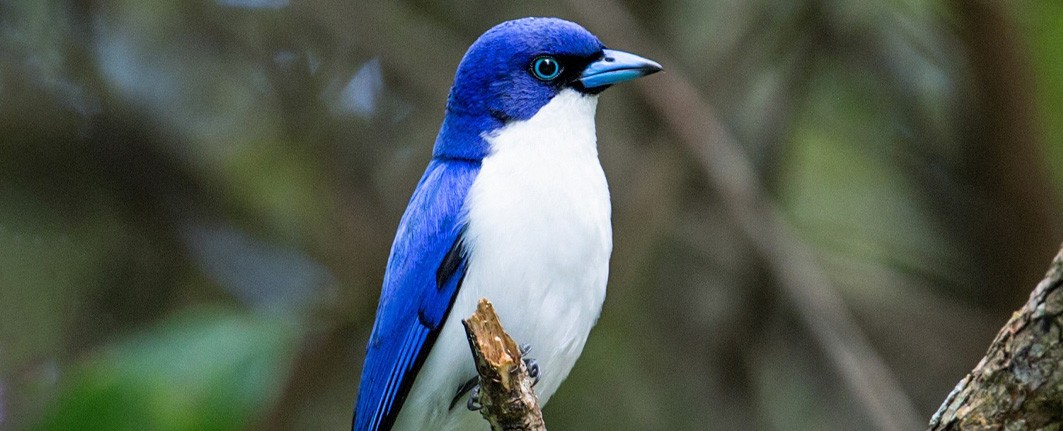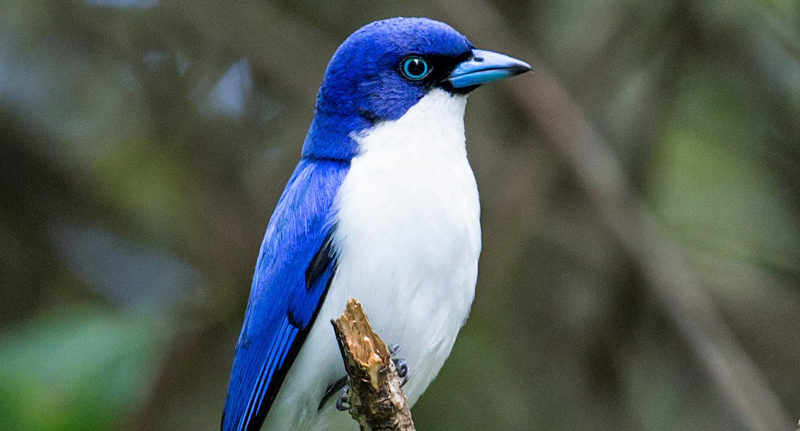
Birds in Madagascar: Discover the Fascinating Feathered Treasures of the Red Island
Madagascar is a dream for wildlife lovers. From its towering baobabs to its unique lemurs, this vast island holds a world of natural wonders. Yet, few travelers realize that Madagascar birds make it one of the most fascinating birdwatching destinations on Earth.
With over 300 bird species, more than 100 found nowhere else, the birds in Madagascar tell an incredible story of evolution, adaptation, and survival. Whether you’re a passionate birder, a photographer, or just a curious traveler, this island promises one of the most unforgettable avian experiences in the world.
The Magic of Birds in Madagascar
A World Apart
Separated from Africa for more than 80 million years, Madagascar has evolved like a laboratory of life. The plants, reptiles, and especially the birds developed in total isolation, giving rise to species seen nowhere else.
Imagine standing in a lush rainforest as the haunting call of a Ground Roller echoes through the trees, or spotting a brilliant Blue Vanga perched in the canopy. Each encounter feels like discovering a secret chapter of nature’s history.
Numbers that Impress
-
311 recorded bird species
-
115 endemic species
-
5 bird families found only in Madagascar
-
Habitats ranging from rainforests to deserts and wetlands
This makes Madagascar a true birding paradise, rivaling the Galápagos or Borneo in terms of uniqueness and diversity.
Endemic Bird Families: Nature’s Masterpieces
Madagascar’s avian world includes five entire bird families that evolved independently — an extraordinary fact even in global ornithology.
1. The Vangas — Madagascar’s Evolutionary Wonder
The Vanga family is one of nature’s greatest success stories. Much like Darwin’s finches, vangas have diversified into more than 20 species, each adapted to a specific niche.
You’ll find vangas with:
-
Hooked bills for tearing insects,
-
Sickle-shaped bills for probing bark,
-
Straight beaks for catching flying bugs.
Notable species include the Helmet Vanga, with its powerful turquoise bill, and the Sickle-billed Vanga, an emblem of the island’s wild creativity.
2. Ground Rollers — Silent Hunters of the Forest Floor
The Ground Rollers look like kingfishers but live on the ground, stealthily moving through leaf litter to catch insects. With their jewel-like plumage and secretive behavior, they are among the most sought-after species by birdwatchers.
3. Mesites — The Hidden Spirits of Madagascar’s Forests
Shy and elusive, Mesites live only in Madagascar’s forests, walking gracefully through the undergrowth in pairs or small groups. These ancient birds are remnants of an evolutionary past that has long disappeared elsewhere.
4. Asities — Jewels of the Canopy
Asities are nectar-feeding birds often adorned with bright wattles around the eyes. They play a crucial role in pollinating forest plants, acting as nature’s tiny gardeners. During breeding, their vivid colors become even more spectacular.
5. Cuckoo-Roller — The Mystery Bird
The Cuckoo-Roller is a bird unlike any other. Its evolutionary origins remain debated, and its flight style — slow and graceful — adds an almost prehistoric touch to Madagascar’s skies. Seeing one glide above the forest canopy is unforgettable.
The Most Iconic Birds in Madagascar
While all of Madagascar’s birds are special, a few stand out for their rarity, beauty, or behavior.
Madagascar Fish Eagle
Critically endangered and among the rarest eagles on Earth, the Madagascar Fish Eagle is the symbol of the island’s wild heritage. It soars over lakes and mangroves, scanning for fish, often calling with a haunting cry that echoes across the water.
Crested Coua
The Crested Coua is perhaps the most photographed of all birds in Madagascar. With its elegant crest and striking turquoise facial skin, it embodies the color and charm of the island’s avian life.
Madagascar Pygmy Kingfisher
Small but dazzling, this bright orange kingfisher flashes through the forest like a spark of light. It’s a favorite among photographers for its vivid plumage and curious nature.
Blue Vanga
A striking bird of the rainforests, the Blue Vanga is as vibrant as the sky itself. Its deep cobalt feathers and melodious call make it one of Madagascar’s most recognizable species.
Sickle-billed Vanga
With its dramatically curved bill, this species probes tree trunks for insects, showing the amazing adaptability that defines the island’s avian fauna.
Madagascar Sparrowhawk
Endemic and elusive, this predator represents the raptors of Madagascar’s skies. It’s often seen darting through the trees in pursuit of smaller birds.
Where to See Birds in Madagascar
Each region of Madagascar offers a different birding experience. The key is to explore a variety of ecosystems — from rainforest to spiny desert to wetlands.
Eastern Rainforests
The humid forests of eastern Madagascar are alive with bird calls at dawn. You can find:
-
Asities and Vangas
-
Ground Rollers
-
Couas
-
Warblers and Flycatchers
Best Parks:
-
Andasibe-Mantadia National Park
-
Ranomafana National Park
-
Marojejy National Park
These parks are also home to lemurs, chameleons, and breathtaking scenery — a paradise for nature photographers.
Western Dry Forests
In the drier west, the scenery shifts dramatically. Here you’ll discover:
-
Thamnornis, the dry forest warbler
-
Sickle-billed Vanga
-
White-breasted Mesite
Top Spots:
-
Ankarafantsika National Park
-
Kirindy Reserve
-
Tsingy de Bemaraha
At sunset, listen for the call of couas and the laughter of vangas echoing through the dry woodland.
Southern Spiny Forests
This otherworldly landscape — full of Didierea trees and spiky vegetation — hosts highly specialized species:
-
Subdesert Mesite
-
Littoral birds adapted to arid zones
Best Region:
-
Ifaty – Reniala Reserve
Wetlands and Coastal Areas
Madagascar’s lakes, estuaries, and beaches shelter magnificent waterbirds:
-
Madagascar Fish Eagle
-
Herons, Egrets, and Ducks
-
Flamingos in Lake Alaotra or Lake Tsimanampetsotsa
Birding here feels like stepping into a dream — reflections of pink birds over shimmering water under an endless sky.
Threats Facing Birds in Madagascar
Unfortunately, not everything in this paradise is safe. The birds of Madagascar face growing threats that endanger their survival.
Habitat Destruction
Deforestation for agriculture and charcoal remains the greatest challenge. Once vast forests have been reduced to fragments, leaving birds with shrinking homes.
Climate Change
Altered rainfall patterns and higher temperatures affect breeding and food availability, especially in delicate rainforest ecosystems.
Invasive Species
Introduced animals like rats, cats, and mongooses prey on eggs and chicks. Invasive plants also transform native habitats.
Hunting and Illegal Trade
Though less common now, hunting and trapping still occur, especially in poor rural areas. Even limited capture can devastate small populations.
The Hope: Conservation and Ecotourism
Thankfully, hope shines bright in Madagascar. Many conservation programs now work hand in hand with communities to protect wildlife.
-
BirdLife International and local partners monitor endangered species.
-
Ecotourism provides income to villagers who now guard forests instead of cutting them.
-
National parks and private reserves are expanding, offering safe havens for countless species.
Each responsible traveler contributes to this effort simply by visiting.
Birdwatching in Madagascar: A Dream for Nature Lovers
When to Go
The best time to see birds in Madagascar is from September to December, when the breeding season fills the forests with songs and colors. Many species show brighter plumage, and young birds start exploring their surroundings.
What to Bring
-
Binoculars (8x or 10x)
-
Field guide or mobile bird app
-
Camera with zoom lens
-
Notebook for sightings
-
Good walking shoes and patience!
Travel Tips
-
Hire a local bird guide — They recognize songs, trails, and nesting areas you’d never find alone.
-
Start early in the morning — Birds are most active between 5:30 and 9:00 a.m.
-
Stay quiet and move slowly — Many species are shy.
-
Respect nature — Never use playback excessively or disturb nests.
Top Birding Circuits
For serious birders, a two-week route might include:
-
Andasibe – Ranomafana (Eastern rainforest)
-
Ankarafantsika (Dry forest and wetlands)
-
Ifaty or Isalo (Southern landscapes)
This combination gives you the best chance to spot over 150 species, including half of the island’s endemics.
Secondary Keyword Section: Endemic Birds and Conservation in Madagascar
Endemic Birds Madagascar — Nature’s Rarest Jewels
The concept of endemism is central to understanding Madagascar’s wildlife. Endemic birds have evolved in isolation and exist nowhere else. They reflect the island’s ancient origin and unique ecosystems.
Some highlights include:
-
Madagascar Blue Pigeon
-
Red-tailed Newtonia
-
White-breasted Mesite
-
Velvet Asity
-
Bernier’s Vanga
Protecting these birds is essential — if they disappear, the world loses them forever.
Madagascar Bird Conservation — A Shared Responsibility
Organizations such as the Durrell Wildlife Conservation Trust, WWF Madagascar, and BirdLife International are leading restoration and research projects.
Community-based conservation, reforestation, and sustainable tourism have proven effective. For example, in Ankarafantsika, local guides now act as forest guardians, ensuring that wildlife thrives alongside human life.
The Fascinating Role of Birds in Madagascar’s Ecosystem
Beyond their beauty, birds perform vital ecological roles:
-
Seed dispersal — Vangas and fruit-eating couas help forests regenerate.
-
Pollination — Asities pollinate flowering plants.
-
Insect control — Warblers and flycatchers keep insect populations balanced.
-
Scavenging — Raptors and crows clean the environment.
Every song and flight plays a part in the harmony of Madagascar’s ecosystems.
Bird Photography in Madagascar — Capturing the Colors of the Wild
For photographers, Madagascar is pure inspiration. Soft morning light in the rainforest reveals iridescent feathers, while dry forests offer dramatic silhouettes.
Tips for better photos:
-
Use a long lens (300mm or more)
-
Focus on the eyes
-
Avoid flash in dark forest zones
-
Capture birds in action (feeding, calling, flying)
A patient photographer can return home with portfolio-worthy shots — and lifelong memories.
How Travelers Can Help Protect Birds in Madagascar
Your journey can make a difference. Here’s how:
-
Choose eco-certified lodges and guides
-
Avoid plastic waste and single-use products
-
Participate in community-based tours
-
Donate to or support local conservation programs
-
Share awareness — Talk about Madagascar’s birds on social media or blogs
Each responsible traveler helps ensure that future generations will still hear the call of the Madagascar Fish Eagle or glimpse the flash of a Blue Vanga through the canopy.
The Future of Birds in Madagascar
The future of birds in Madagascar depends on collective effort. The island’s forests and wetlands can still recover if awareness and conservation continue to grow.
Education, sustainable development, and responsible tourism can transform local challenges into long-term success. Protecting birds means protecting water, forests, and the very soul of Madagascar.
Final Thoughts: A Paradise in the Sky
The birds in Madagascar are more than wildlife — they are living proof of evolution’s magic, symbols of resilience, and ambassadors of the island’s natural beauty.
From the mysterious Ground Rollers of the rainforest to the majestic Fish Eagle soaring over shimmering lakes, every species tells a story that connects us to the ancient heartbeat of this island.
Visiting Madagascar is not just a trip — it’s a journey into nature’s imagination, where every feather carries a piece of Earth’s most fascinating history.
HT AGENCY TOURS
Luxury Madagascar with the best luxury African safari tours packages. Discover your next perfect destination with HT Agency Tours

